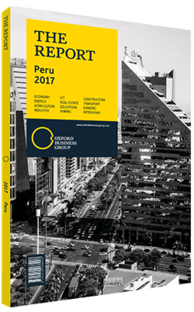Karl Maslo, Regional CEO, EXSA: Interview

Interview: Karl Maslo
To what extent has the mining crisis impacted the industrial sector in Peru?
KARL MASLO: The mining crisis has affected all sectors, not just industry. At the end of 2013 the margins of mining companies were severely affected by the drop in mineral prices. This then pushed down the prices of any industry or sector servicing or supplying them. The crisis has also caused several large projects to be halted. Despite the prices of some minerals, such as gold, silver or zinc, this situation is expected to continue through to 2018, especially considering the price of copper is not showing any significant signs of recuperation. In fact, it is unlikely that any new projects will begin until 2021.
What role does research, development and innovation (RD&I) play in strengthening industry amid challenging economic circumstances?
MASLO: When faced with a difficult economic environment, investing in new technologies, services and products can be a decisive factor to make it through the downturn. Hence, RD&I plays a very significant role. New developments must consider the economic reality of the country. An example of this is Quantex, a technology that was developed entirely in Peru, and reduces blasting costs in mining by almost 30% and the carbon footprint of blasting by 18%. By using fertiliser-grade ammonium nitrate instead of industrial low-density ammonium nitrate, this technology is significantly more cost-efficient than traditional ones. It has completely changed blasting for mining in Peru and is likely to do the same in other mining countries, which shows that world-class innovation can happen in Peru given the right conditions.
Although this is not an isolated case of innovation, the reality is that domestic companies lack the DNA to invest in RD&I. The problem lies in the framework. The new administration must work to create the necessary conditions to enhance investments in RD&I. Current incentives are insufficient to make a big structural change. Without the government’s initiative to prioritise innovation as the key to facing economic uncertainty, cases such as the development of the Quantex technology will continue to be exceptions to the rule.
How can Peruvian industries work to increase their ratio of outputs to inputs?
MASLO: To achieve higher productivity rates, you need incentives, not only for developing innovative technologies but also to bring foreign technologies into the country. Furthermore, you need significant infrastructure (port, road and airport) improvements and developments. A competitive tax framework is also an important factor, as is improving education at all levels. A combination of all these elements is the key to increasing the ratio of Peruvian outputs to inputs.
What is the potential of the domestic downstream petrochemical industry?
MASLO: Peru has the most valuable gas in the world, comprised of 10% ethane and 90% methanol, compared to gas elsewhere that is commonly comprised of 5% ethane and 95% methanol; therefore, the potential is certainly there. However, Peruvian gas is either being exported or burnt for energy production, causing the country to rely on imports of petrochemical products rather than maintaining a strong industrial sector.
There are two key tasks for the new administration to turn Peru into a petrochemical hub on the western coast of South America. First, the government must show ability and leadership to renegotiate its contracts with the operations of the Camisea Gas Project. Second, it must create the necessary framework to attract investments for increasing downstream capacity, just like Singapore’s petrochemical industry development decades ago. Only then will Peru be able to truly capitalise on its privileged location and significant trade agreements. This will enable the country to become a regional petrochemical hub and exporter of plastics.
You have reached the limit of premium articles you can view for free.
Choose from the options below to purchase print or digital editions of our Reports. You can also purchase a website subscription giving you unlimited access to all of our Reports online for 12 months.
If you have already purchased this Report or have a website subscription, please login to continue.

